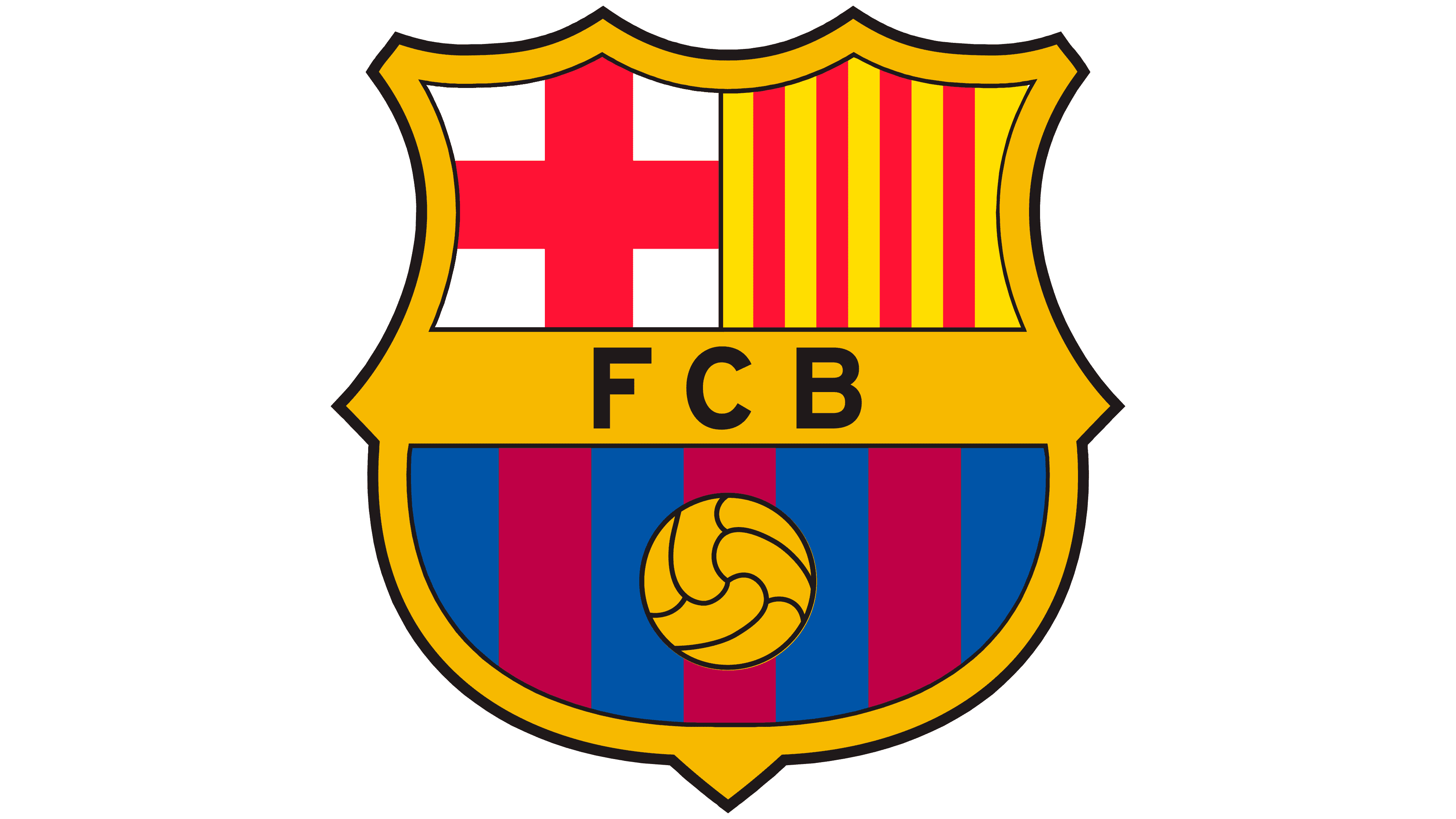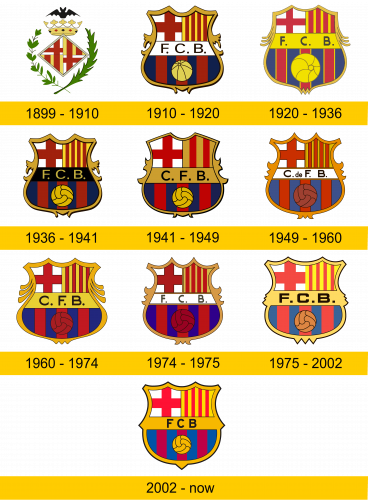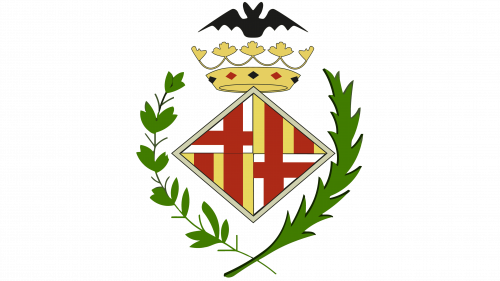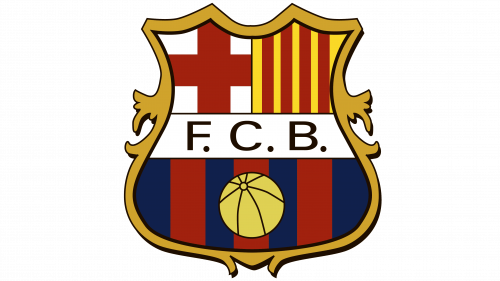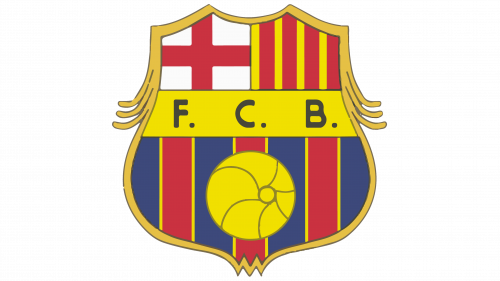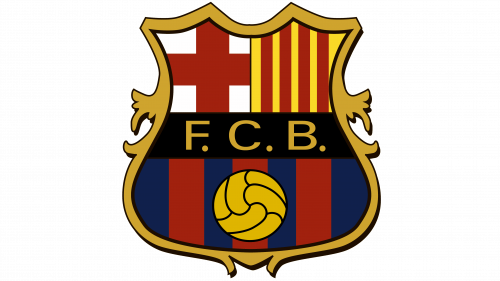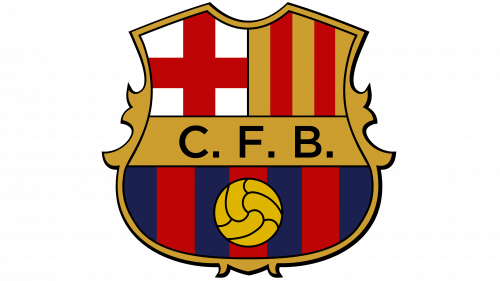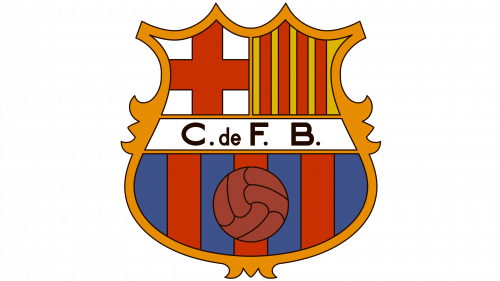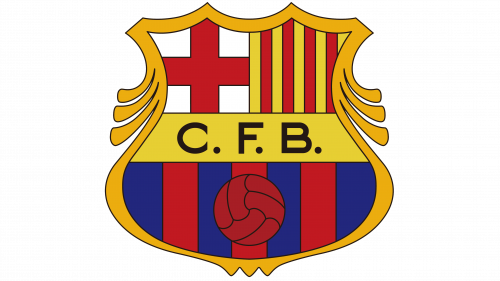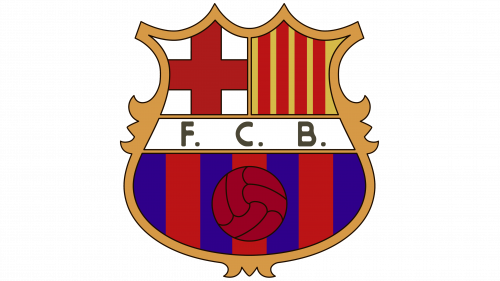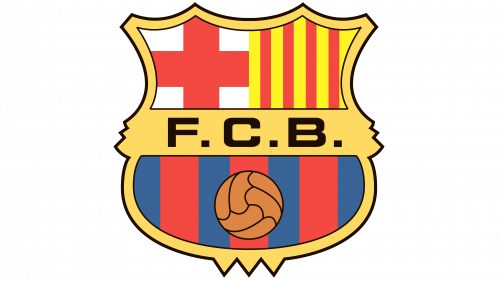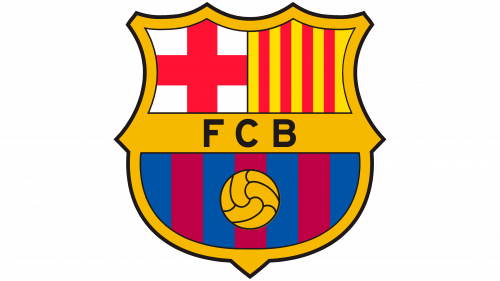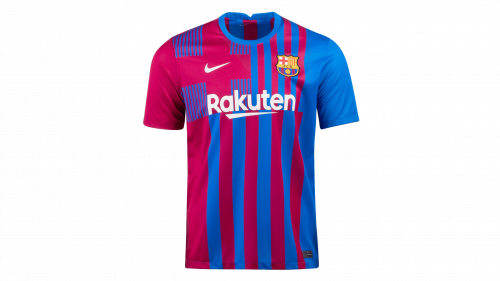Barcelona is one of Spain’s top football clubs. According to FIFA, they’ve consistently ranked in the list of 10 best clubs worldwide. It’s particularly known as the club where Messi spent much of his playing career. Barcelona also remains one of the oldest-surviving clubs in the country.
Who owns Barcelona? The club is owned by its fans. Truly, the club’s shares are divided between 140,000+ fans.
History Logo
The club was created in 1899 in Barcelona, Spain. Upon its creation, it was the only truly professional club in this city, which soon became the subject of much pride for the locals. The club used the name ‘Barcelona’, since the beginning, although there were several variations regarding the full form.
1899 – 1910
They were originally been using the traditional coat of arms of Barcelona – the rhomb featuring the city’s flag, adorned with the crown. On only addition were two green laurel wreaths on each side of the rhomb, signifying triumph.
1910 – 1920
By 1910, the team adopted the design they used more-or-less for the remainder of their history.
It was a plump bronze shield divided in three sections: the uppermost held two of the city’s patterns (the red cross & the striped orange-with-red cloth), the center was pierced by a thick white stripe with black letters ‘F.C.B.’ on it, while the bottom contained the same striped pattern, except with blue instead of orange.
This bottom section is also where they put a yellow football.
1920 – 1936
They mainly used the same design until 1936, with just several alterations. The central line was lifted and colored yellow. The yellow was also added to the rim of the shield, as well as the rims of the stripes in the bottom section. In addition, the ball slightly grew in size, and that’s largely it.
1936 – 1941
The design then returned to its 1910s variation, with two exceptions: the middle stripe was turned black, while the letters became yellow; and the ball also received a new pattern.
1941 – 1949
They changed the coloring again 1941, and again for the same place. The black became bronze, and the letters turned to black. They were also repositioned: namely, the ‘F’ and ‘C’ switched places.
1949 – 1960
Much of the logo lost saturation in 1949, but they also changed the color of the ball to red, as well as returned the old black-and-white style for the middle section. Here, they also placed the ‘de’ preposition right after the first letter.
1960 – 1974
The design mostly returned to the 1941 one, except for the ball. The stripe was also yellow now.
1974 – 1975
The only real change in 1974 was that the letters were reduced in size, put further apart, and that their background came back to being white. There were also some coloring changes – the blue and red became darker and more saturated, for instance.
1975 – 2002
In 1975, they altered the color and the letters positioning again. Color-wise, the brightness was increased everywhere, the ball changed to brown, and the midsection became yellow again. Minor changes also include a greener shade of blue and the prevalence of yellow where possible.
As for the latter part, the letters turned to ‘F.C.B.’ again.
2002 – today
In 2002, they increased the saturation even more, turned the ball yellow (while also reducing it in size), got rid of the dots between the letters, put them closer together and reduced them in size also. Lastly, the designers added a thicker black outline outside the shield.
Uniform History
Barcelona home uniform was primarily blue shorts and a red-striped blue jersey throughout the years. The exact composition varied, naturally, but not too much – mostly regarding the tones, shades and the thickness of stripes.
The away colors are more versatile – they mostly used the same color combination, but with fewer striping. When they weren’t clad in blue and red, they instead preferred yellow, orange or lime green (although there were also many more combinations, because they changed all the time).
Barcelona Colors
GOLD
PANTONE: PMS 7408 C
HEX COLOR: #EDBB00;
RGB: (237, 187, 0)
CMYK: (8, 26, 100, 0)
BLUE
PANTONE: PMS 7687 C
HEX COLOR: #004D98;
RGB: (0, 77, 152)
CMYK: (100, 79, 9, 1)
BURGUNDY
PANTONE: PMS 7426 C
HEX COLOR: #A50044;
RGB: (168, 19, 62)
CMYK: (24, 100, 70, 15)
RED
PANTONE: PMS 199 C
HEX COLOR: #DB0030;
RGB: (219, 0, 48)
CMYK: (8, 100, 88, 1)
YELLOW
PANTONE: PMS 3945 C
HEX COLOR: #FFED02;
RGB: (255, 237, 2)
CMYK: (3, 1, 97, 0)
BLACK
PANTONE: PMS BLACK 6 C
HEX COLOR: #000000;
RGB: (0, 0, 0)
CMYK: (0, 0, 0, 100)

